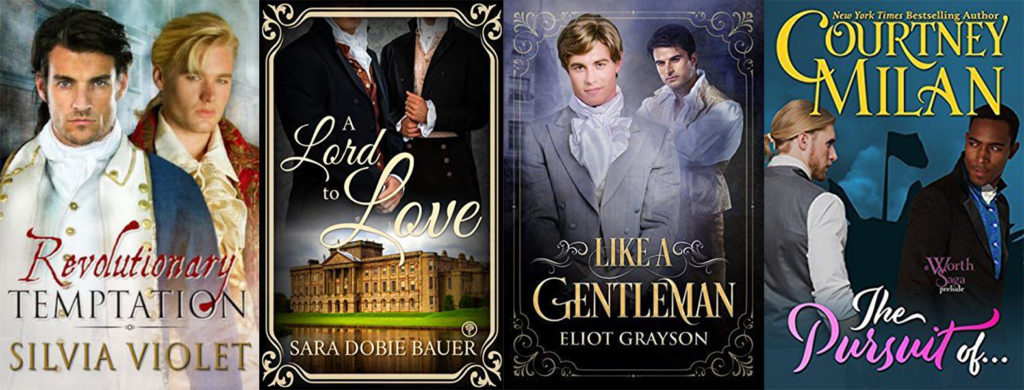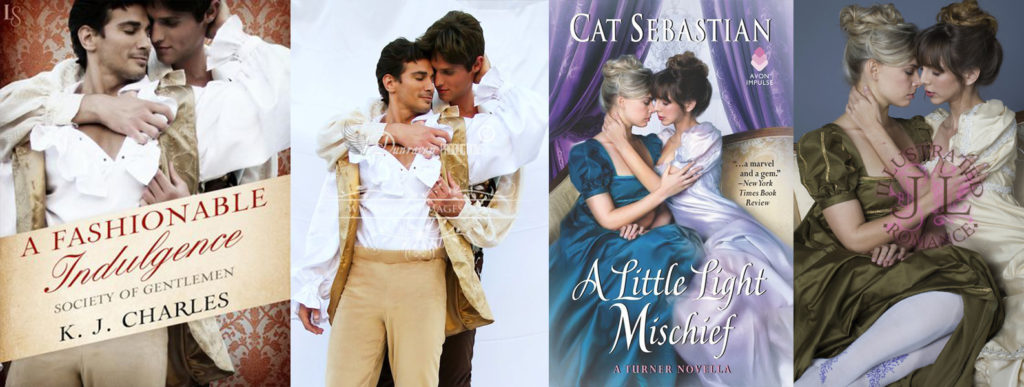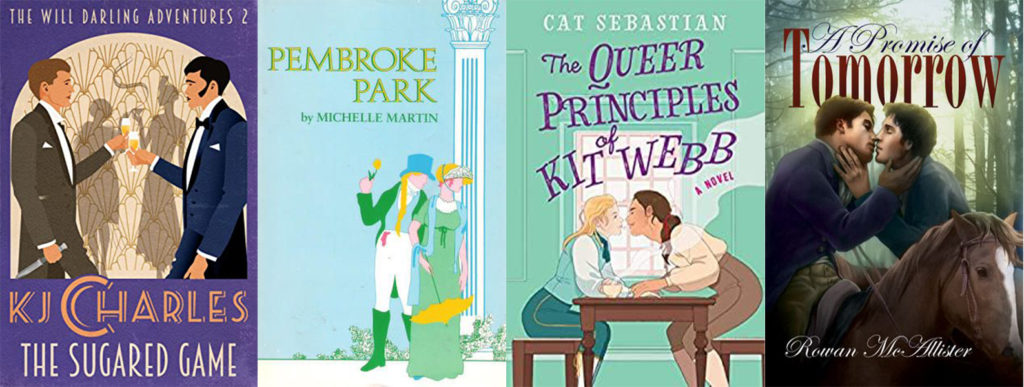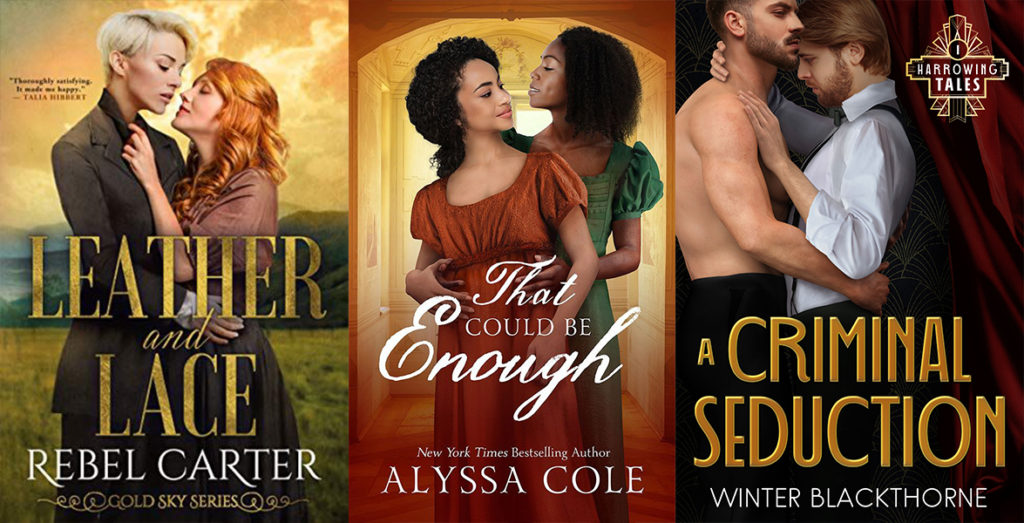How Are LGBTQ Historical Romance Book Covers Made?
I make LGBTQ historical romance book covers. Yet, I often see the implication that creating F/F or M/M historical covers is impossible unless you’re getting a custom photo shoot, due to lack of stock photos. While I acknowledge it’s a challenge (especially if authors are going to DIY), it’s far from impossible!
For this blog post, I’m primarily looking at books with f/f and m/m couples in the cover art. Obviously, that is not representative of the entire LGBTQ community, but same-gender couples are still relatively rare on historical romance book covers. Part of that may be due to overall lack of LGBTQ historical romances being published and part of that may be due to the aforementioned lack of stock photos.
Two Characters, Not Interacting

Placing your two characters together (either in a scene or as disembodied faces floating above a landscape) is an obvious solution. It doesn’t require you to find stock photos of historical same-gender couples, making it easier to DIY. The downside is that the lack of interaction leads to a lack of, well, romance. It’s hard to get passion through what is at best, eye contact.
Stock Photos of LGBTQ Historical Couples

While there are not many existing stock photos, there are some. For instance, the one on the left above comes from Period Images’ only historical LGBTQ photo shoot, which has thirteen images of that couple. The one on the right is from The Illustrated Romance, which has a larger collection of LGBTQ models. From what I can tell, most of the Cat Sebastian cover models are sourced from The Illustrated Romance.
The downside of using stock photos is that there aren’t many of them, they still lack diversity (I don’t know of any stock photos with PoC in same gender couples) and the same photo can be used on multiple book covers. Prices vary depending on the site. Period Images is pretty affordable, but The Illustrated Romance is $60 for a single high res photo.
Custom Photo Shoot?

I was able to look at the cover credit information for The Perks of Loving a Wallflower and credit was given to a photography studio, which highly suggests that it was created by getting two women to actually pose in regency era costumes in a shoot created specifically for this book.
Obviously, getting models and costumes together for a custom photo shoot leads to some great covers! You don’t have to worry about your cover sharing the same stock photo with other titles or lack of diversity in available models. The drawback to this approach is price — it’s generally not feasible for indie authors or small presses. Even the Cat Sebastian AVON historical f/f and m/m book covers use stock photos, as we’ve already discussed.
Illustrated

If you can’t get photos, why not hire an artist to create the cover from scratch? Illustrated covers (especially in the “flat” vector style, such as with The Queer Principles of Kit Webb) are becoming more and more popular with romance book covers. In fact, it seems to be an ongoing subject of conversation among romance readers: photo covers or illustrated covers? Either way, a lot of people seem to have strong opinions. A point in favor of illustrated covers are that they compensate for lack of diversity in stock photos. Detractors argue that they don’t adequately convey the heat level or tone of a book.
Photo Compositing and Mixed Media

This is how I create my covers — a combination of photo manipulation, 3D posing software, and digital painting. I still use stock photos, but the models that make up my couples tend to come from different photos. Of the covers above, That Could Be Enough and A Criminal Seduction are examples of my work. I can’t prove that Leather and Lace was made in the same way, but I suspect that even if it’s not using 3D, it is combining different photos.
Whether you’re an author planning to DIY or to hire a designer, hopefully this gives you some ideas of how LGBTQ historical romance book covers are created and what might be possible for your book! Or if you’re interested in premade book covers, you can check out my historical romance premades here.
I happen to know (simply because I subscribe to Ridley’s newsletter) that Wallflower’s cover IS a photoshoot, but, due to COVID restrictions, it’s actually of a model the publisher has used before and her wife, so, I don’t know how that may or may not have affected cost. That said, I think Ridley was pretty intent on having a cover that wasn’t from stock and, since this is part of a series and the previous ones haven’t been illustrated, illustrated wouldn’t have worked. I can’t speak to if they discussed good graphic design. One would think, but…
Very interesting!
(stock photos)
This may well explain what peeved me about the covers for Olivia Waite’s Feminine Pursuits series – the lack of plus size models when at least one of the heroines in each book is, explicitly.
My god I loathe those covers. Waspish Widows was particularly egregious.